When an invitation to ride the three-day Haute Route Davos in the Swiss Alps pinged into my inbox on a Friday morning in April, I accepted in a flash.
I love climbing hills, but Birmingham where I live is better known for its Peaky Blinders than lofty peaks.
I can accumulate stacks of elevation in the nearby Worcestershire and Shropshire hills, but climbs longer than 20 minutes are hard to come by.
Consequently, I was thoroughly underprepared for what lay ahead in Switzerland.
On foreign roads, I wanted to ride something familiar: my 2017 Canyon Ultimate CF SLX, a gorgeous looking bike I bought second-hand late last year.
As you’re reading this, you’ll gather I made it down the 15km-descents in one piece, despite using obsolete stopping technology, namely rim brakes.
But I made a handful of changes to its already splendid spec to better suit the dizzying dénivelé – or height difference – to come.
Jack Evans' Haute Route Davos
The horse: Jack's 2017 Canyon Ultimate CF SLX with SRAM Red eTap, Zipp 303 Firecrest wheels and Favero Assioma Duo power meter pedals.
The course: Haute Route Davos, two 100km stages with 6,000m elevation and a 15km uphill time trial.
The goal: To finish in one piece and move up the field to a reasonable position
The Course – Haute Route Davos
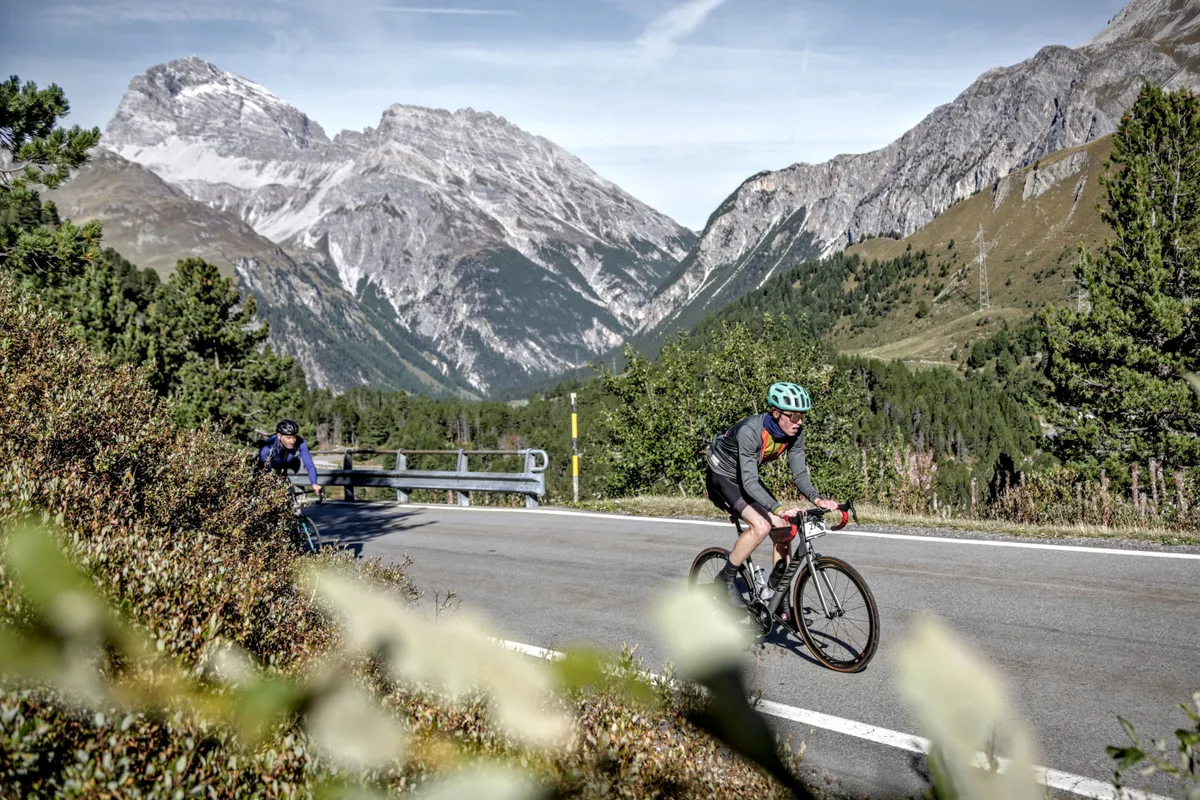
The Haute Route Davos took place in the host town of the World Economic Forum in the south-eastern Graubünden region of Switzerland.
The event is far less arduous than five- and seven-day epics the Haute Route company organises in the French Pyrénées and Alps.
Nonetheless, the Haute Route Davos – or as one rider quipped “who can ride the expensive bike up the hill fastest” – packed 6,000m of climbing into two 100km-stages and a 15km uphill time trial on the final day.
And the route was indeed “haute”, as my unnaclimatised lungs discovered after climbing above 2,300m on three separate occasions.
The Haute Route Davos included several timed sections a day from which the day’s winners and general classifications were calculated.
These were almost entirely on climbs and flat valley segments rather than descents for safety purposes.
The competition was fierce at the elite end. Team Amani’s Charles Kagimu described to me how he held 450W for 45 minutes on one climb in a bid to hang on to the leading trio.
This meant the Ugandan rider, a professional at Continental level, was putting out more than 7W/kg, a phenomenal power to weight ratio. Charles finished fourth overall despite having to room with me.
Miles down the field, I was content to ride steady as I could throughout the event, mindful of not creeping into higher training zones too early.
The Horse – Canyon Ultimate CF SLX
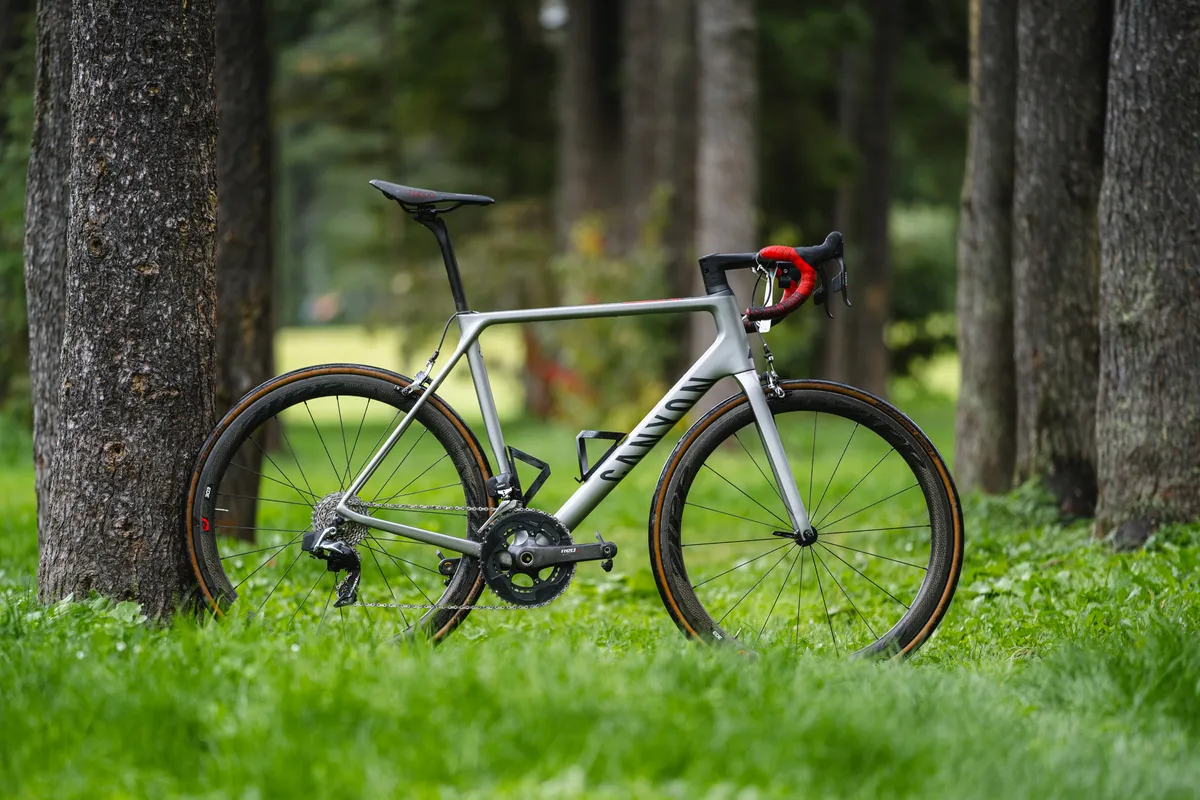
On my first foray in the high mountains (Gospel Pass in Wales at 549m above sea level was the loftiest peak I’d previously scaled), I was uncertain how my aerobic system would react to the rarified air. This caution informed my decision to swap my Canyon’s 11-28t cassette for an 11-32t to provide easier gears.
For the majority of my riding in the UK, an 11-28t cassette paired with 52/36T chainrings is ideal.
I prefer a tight gear ratio while riding in a group to avoid jumps between gears disrupting my pedal stroke.
Maintaining a decent cadence uphill requires higher speed and concomitant higher power than with a lower gear ratio, which I manage on moderately long UK climbs.
But I knew I wouldn’t be able to on hour-long Swiss ascents at altitude.
However, to have easier gears I couldn’t just put on a bigger cassette.

The rear derailleur on the first generation 11-speed SRAM Red eTap groupset I was running has a maximum sprocket size of 28 teeth.
The introduction of 12-speed SRAM Red eTap AXS HRD did make SRAM road gears easier, which I could’ve upgraded to.
But I didn’t want or need a whole new drivetrain. Fortunately for me, SRAM recently(ish) released a new version of its 11-speed eTap rear derailleur that is compatible with larger cassettes.
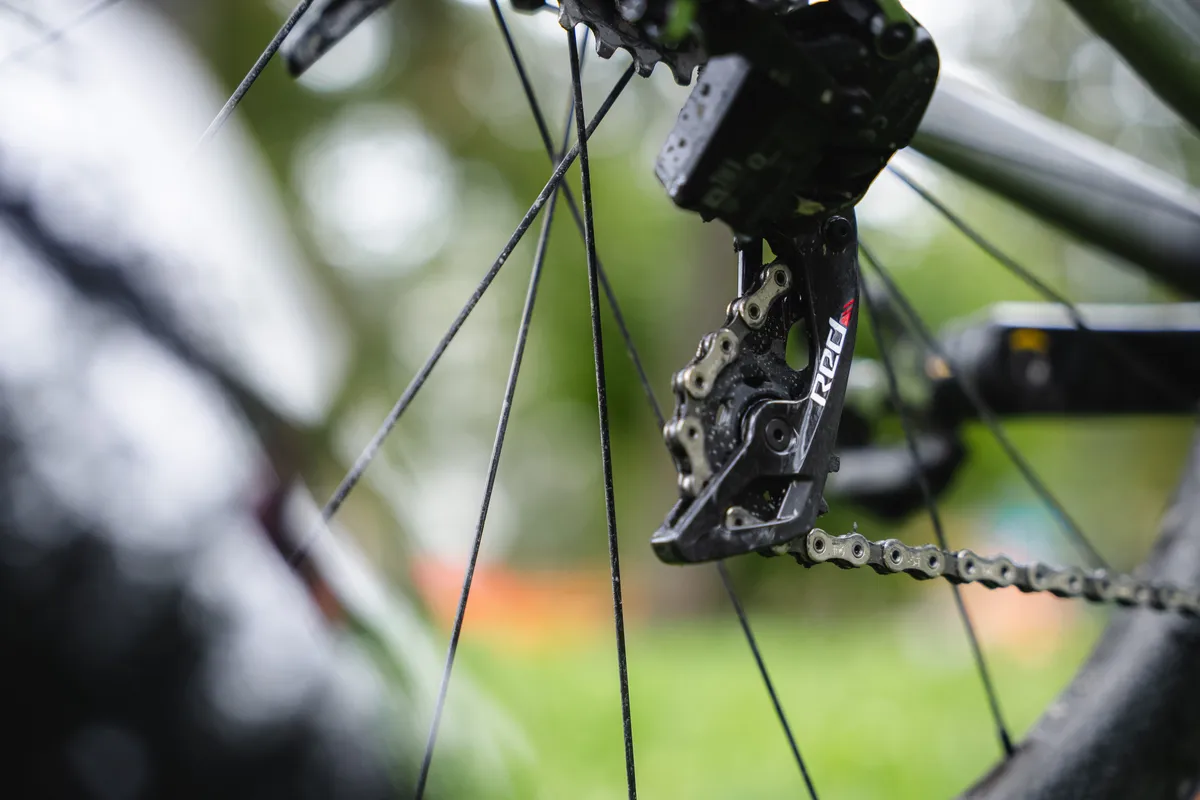
As it is a wireless drivetrain, fitting the SRAM Red eTap A2 rear derailleur and matching XG-1190 11-32t cassette is a doddle, taking a skilled mechanic less than 30 minutes.
The final shifting-related addition was a fresh SRAM Red eTap 11-speed chain.
I cleaned this prior to installation following BikeRadar drivetrain whisperer Simon von Bromley’s guide on how to wax a bike chain.
But I skipped the immersive waxing step and instead dripped on Simon-approved Smoove chain lube.
One application of this wax-based chain lube was more than enough for the Haute Route even after a soggy end to the second day.
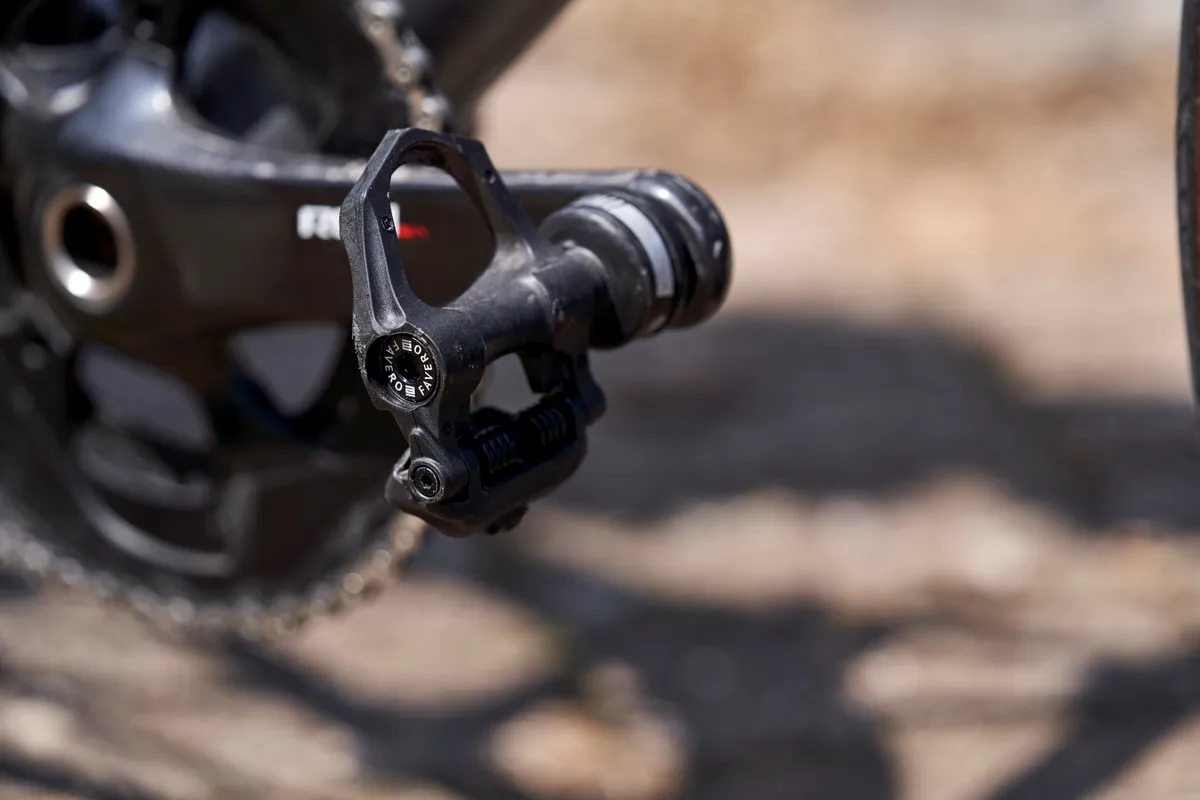
My Canyon came with Shimano Dura-Ace PD-7900 road pedals, which I swapped in April for Favero Assioma Duo power meter pedals.
But instead of riding with power, I had to rely on feel and my Wahoo Tickr heart rate monitor on the first day.
I’d forgotten the charging cable required to wake my Favero pedals out of travel mode (thanks again to a British rider called Mark who lent me his).
A late start and high climbing
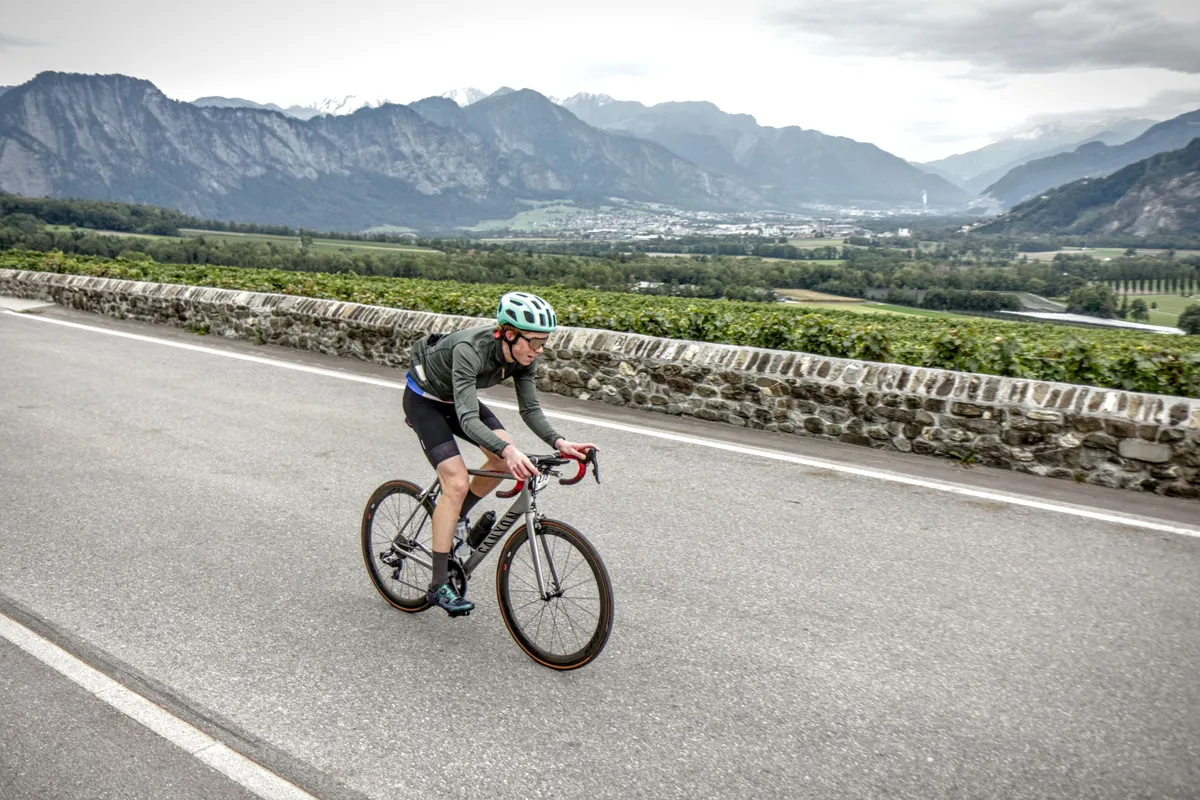
Another rookie error was arriving at 1am in Davos, only getting into bed at 2am after unpacking and building my Canyon out of its bike box.
A late start meant I found myself attaching my number and timing chip as the rest of the field zoomed off on a very nippy Alpine morning.
Ten minutes’ in arrears, I set off on a solo pursuit through the frosty valley with the sweeper motorbike checking in on me.
A fast 30km with the odd sweeping descent led to the foot of the Hors Catégorie Albula Pass.
I was starting to warm up, but stupidly pulled over to shed layers having passed the timing board.
With leg warmers and hat stashed in my jersey pocket, I restarted the 23km climb at 5.8 per cent average gradient.
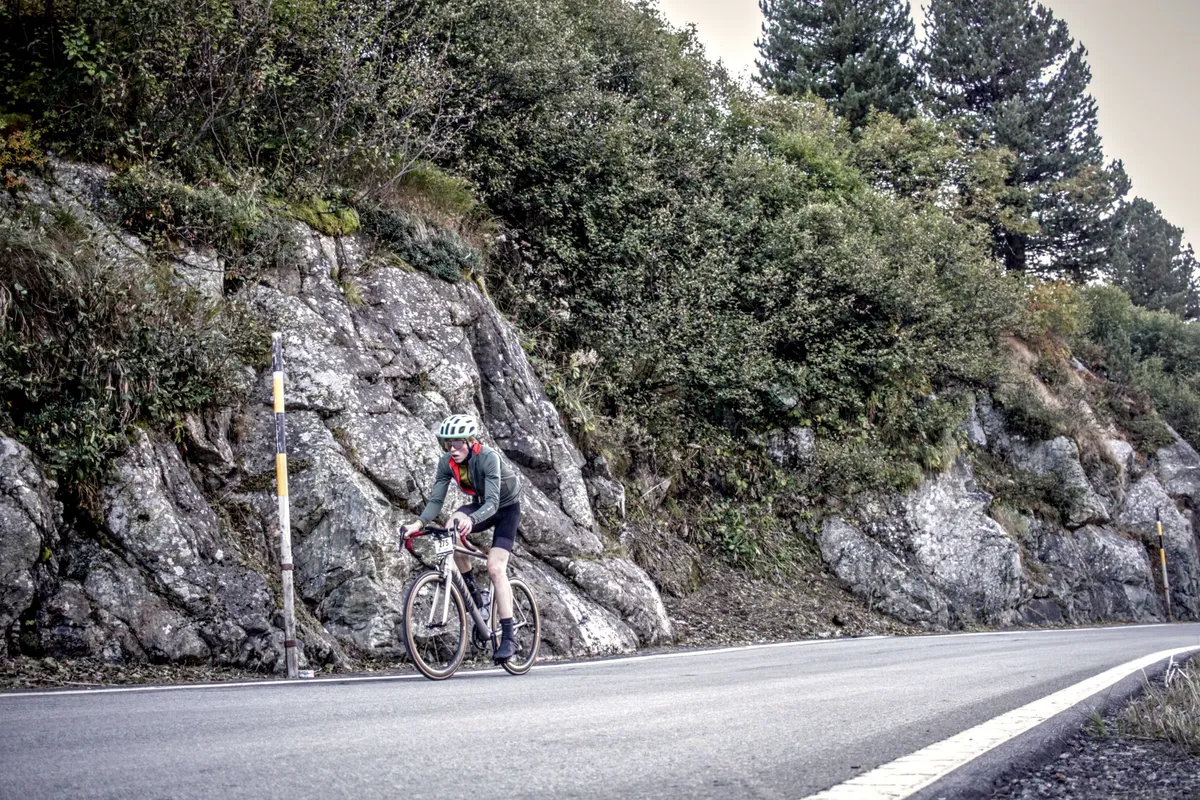
The higher we climbed the more the road wound in and around increasingly bare cliff faces sending the gradient into double digits and my quads into discomfort.
The road past Bergün’s beautiful wooden chalets flattened before we exited the village on a smooth cobbled climb.
The hairpins began in the second half of the mountain and I was grateful for my easier gears in their steep bends.
During the Albula’s hardest part from Kulm to Hospice – 5km at 10 per cent – I rarely left the 30t sprocket.
After the marvellous vista over the sparkling Lai da Palpuogna, the roadside and surface became harsher.
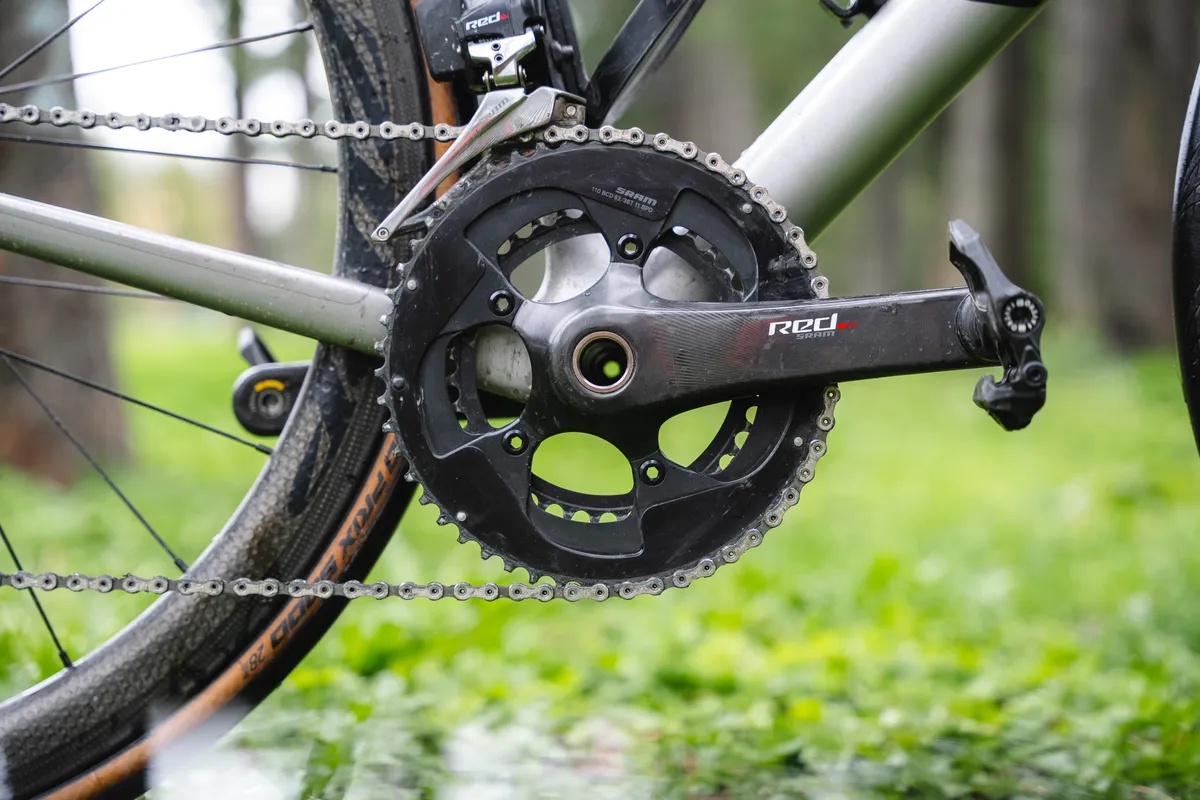
The final three kilometres averaged 6.9 per cent. That doesn’t sound hard on paper, but as the air thinned, staying below my threshold heart rate was not easy.
At the feed station at 2,300m, I refuelled with a banana and the satisfaction of having topped my first mountain.
I refilled my empty bottle with energy drink and pocketed a couple of gels. Another Hors Catégorie peak, the Fluëla Pass, towered 37km in the distance.
The road then zigzagged down for 8km from the Albula, proving fast and technical.
The longest descent I’d done was the 6.5km-western drop from the Bwlch in South Wales.
Even in the wet, you don’t need to be a demon descender to negotiate the mostly straight road with good visibility around its slight turns.
The Albula descent couldn’t be more different. The view down its squiggling S-bends to the bottom intimidated me.
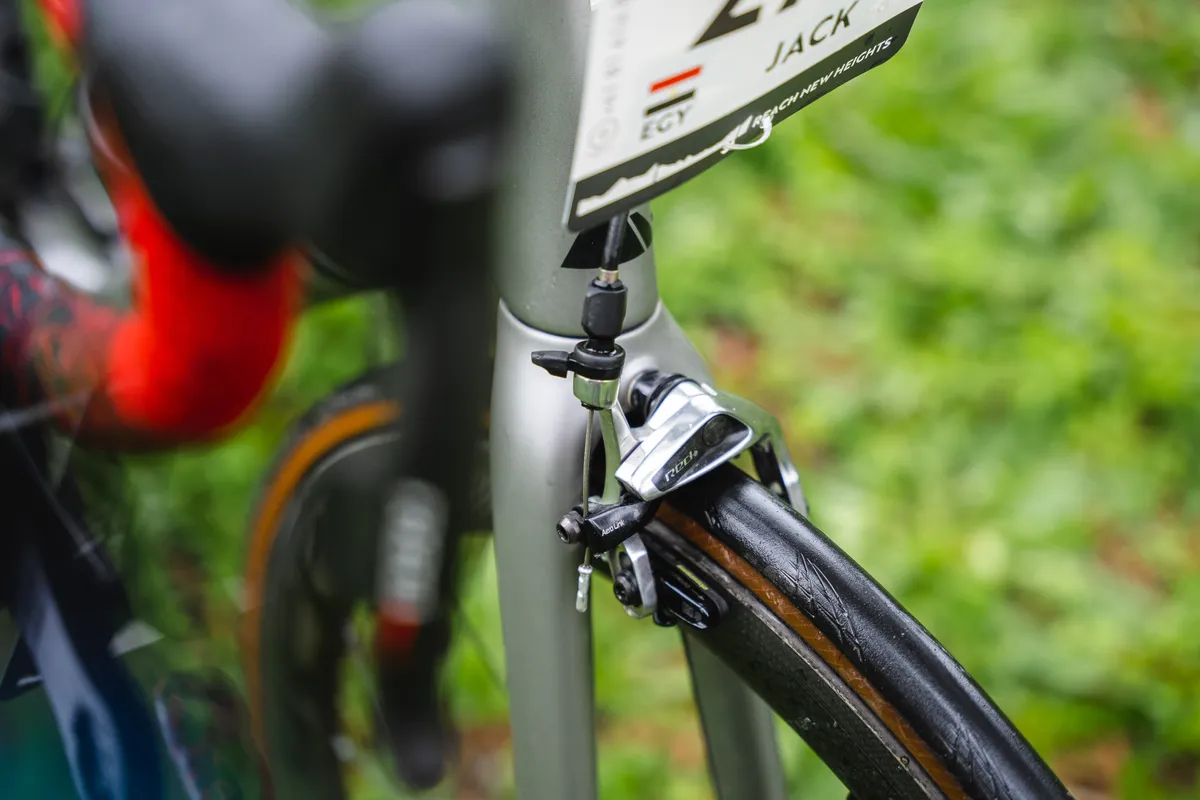
I fluffed the first corners by not turning in time and having to brake hard to avoid testing the crash barrier’s effectiveness.
After a couple of goes, I learnt my line into the hairpin was more influential on cornering well than the stopping power of my rim brakes.
Provided I pulled the levers in good time, my new Swissstop Flash Evo Black Prince carbon rim brake pads didn’t squeal against my Zipp 303 Firecrest wheels.
I was swinging through the bends more rhythmically by the time I dropped into La Punt Chamues-Ch on the valley floor.
The next flat 20km to Zernez helped me up my average speed (the Tour de Suisse rocketed through here at 57km/h, according to Strava).
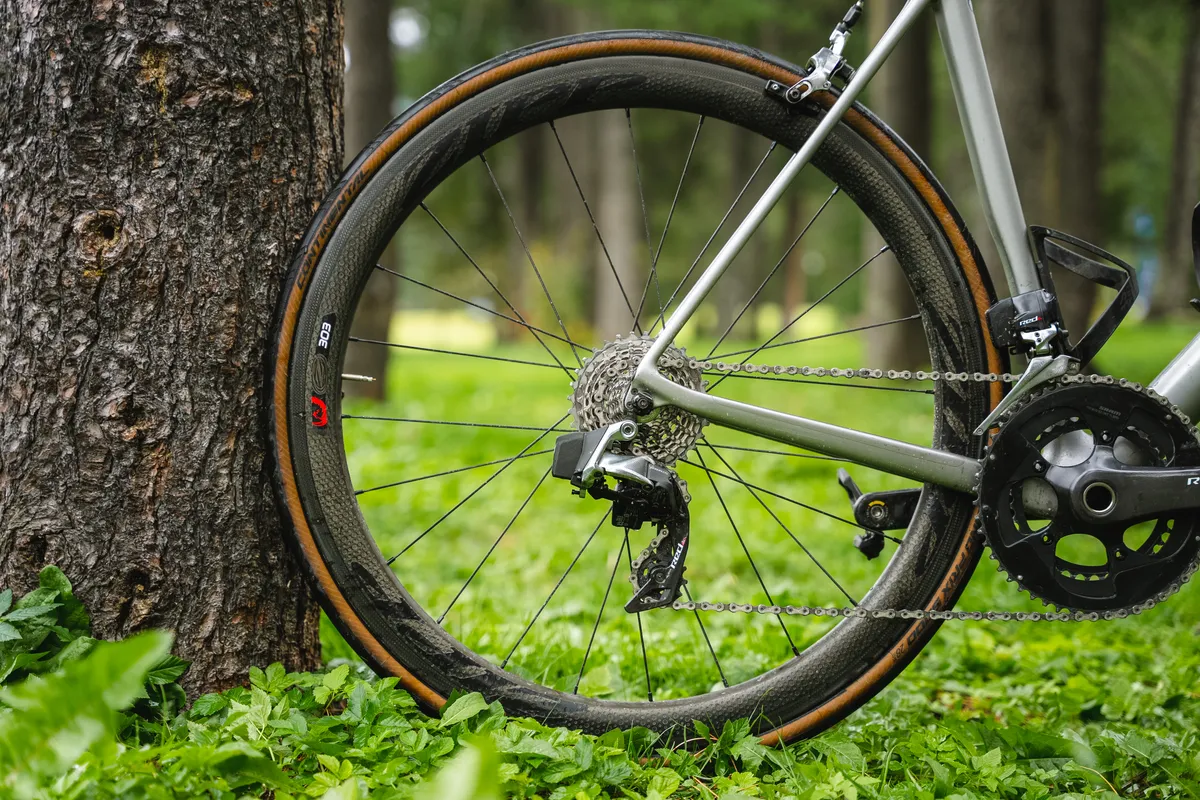
I was feeling the aero benefit of the whooshing mid-section Zipps and my Canyon’s H31 aero cockpit. I find this handlebar allows me to spend many comfortable hours in the drops.
The 13km from Susch to the snow-flecked Fluëla Pass were much straighter save for a coil of corners a quarter of the way up.
Its 950m of altitude gain also stayed truer to its 7 per cent average gradient. Nonetheless, a dead-straight 900m-stretch averaging 12 per cent in the final third forced me into the 32t cog.
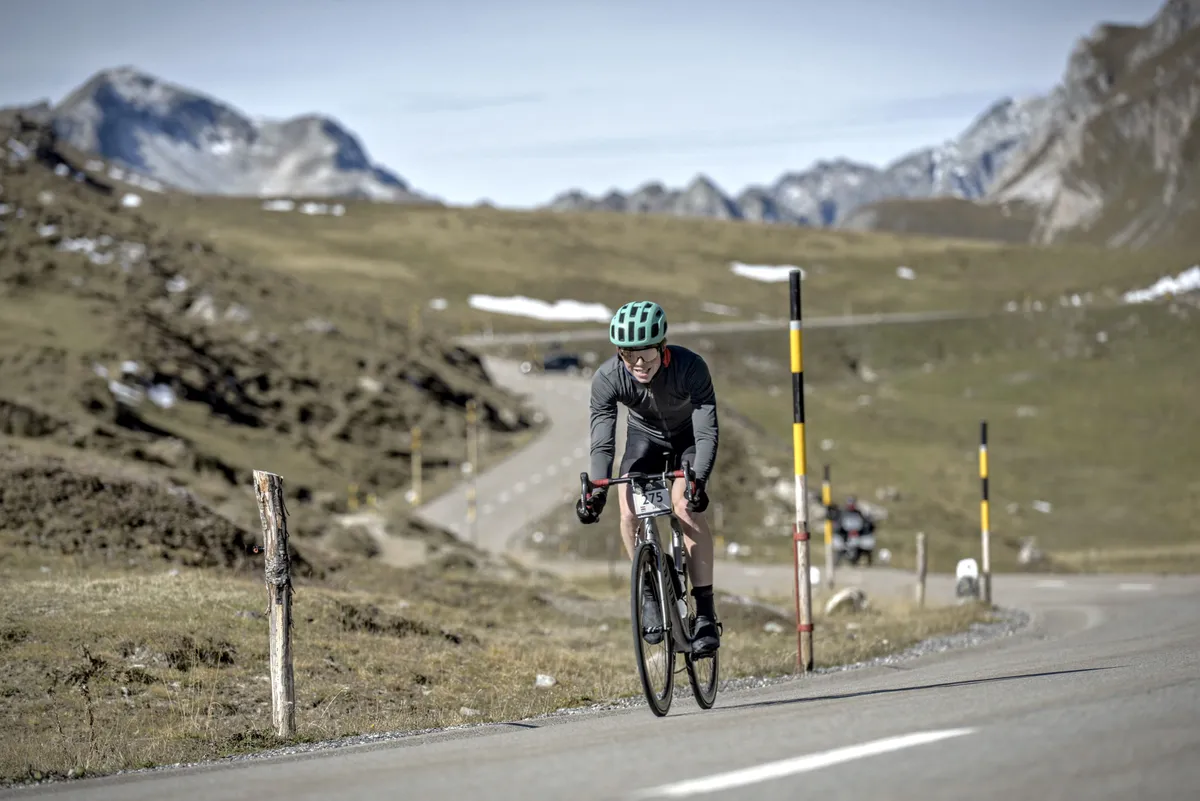
I changed to the big ring as the incline eased on top and dashed past a couple of riders I’d been pursuing before the finishing line.
Once I straightened up from my exhausted slump over my handlebars, I glugged a coke in the dazzling sunshine beside Lai de la Scotta lake.
I donned warmer clothes from my rucksack the race organisers had transported from the start and plunged 800m down to Davos.
A meat-and-potato-based Swiss lunch and very welcome massage awaited at the race village.
Fateful Fatans
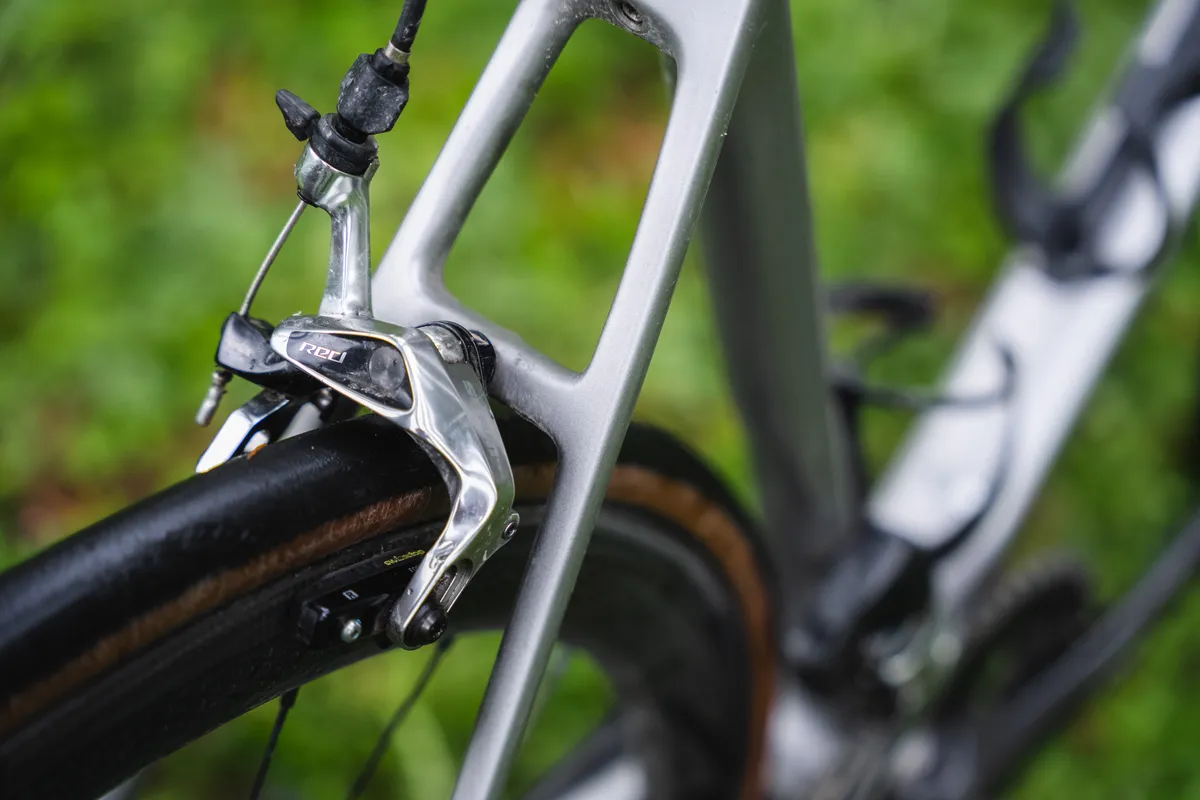
On the second, milder day I made it to the start in time to ride with the peloton north out of Davos.
After turning west through Klosters Dorf, the speedy progress ensued to the first climb at Putz.
The ascent’s three kilometres averaging 8.4 per cent thinned the bunch as the racers disappeared around the first S-bend.
This made descending to Schiers much more relaxing than the day’s initial downhills had been while bunched together.
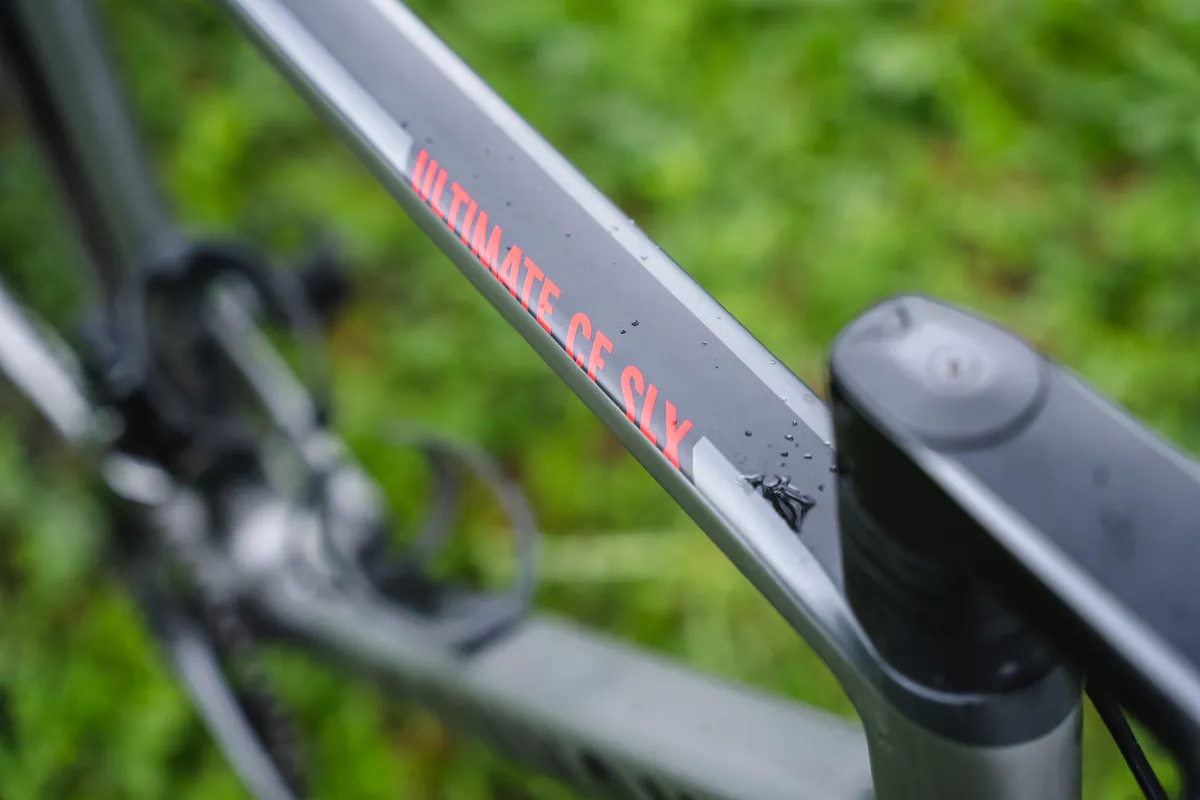
From Schiers came some of the event’s toughest climbing. The second category Fatans is 6km long with a nearly 8 per cent average incline including 2km at 12 per cent late-on.
Unlike the majority of the Haute Route Davos climbs, the road to Fatans is narrow and poorly surfaced.
It doubled back and forth along farm fields then straightened and steepened on a wooded crest.
The decidedly white-knuckle descent gave me no chance to regulate my heaving breathing.
I could pay little attention to the twin mountain peaks on the horizon while potholes, drainage pipes and gravel greeted me around each sharp turn.
My Canyon’s poised handling and traction on my Continental GP5000 tyres got me down to Fanas.
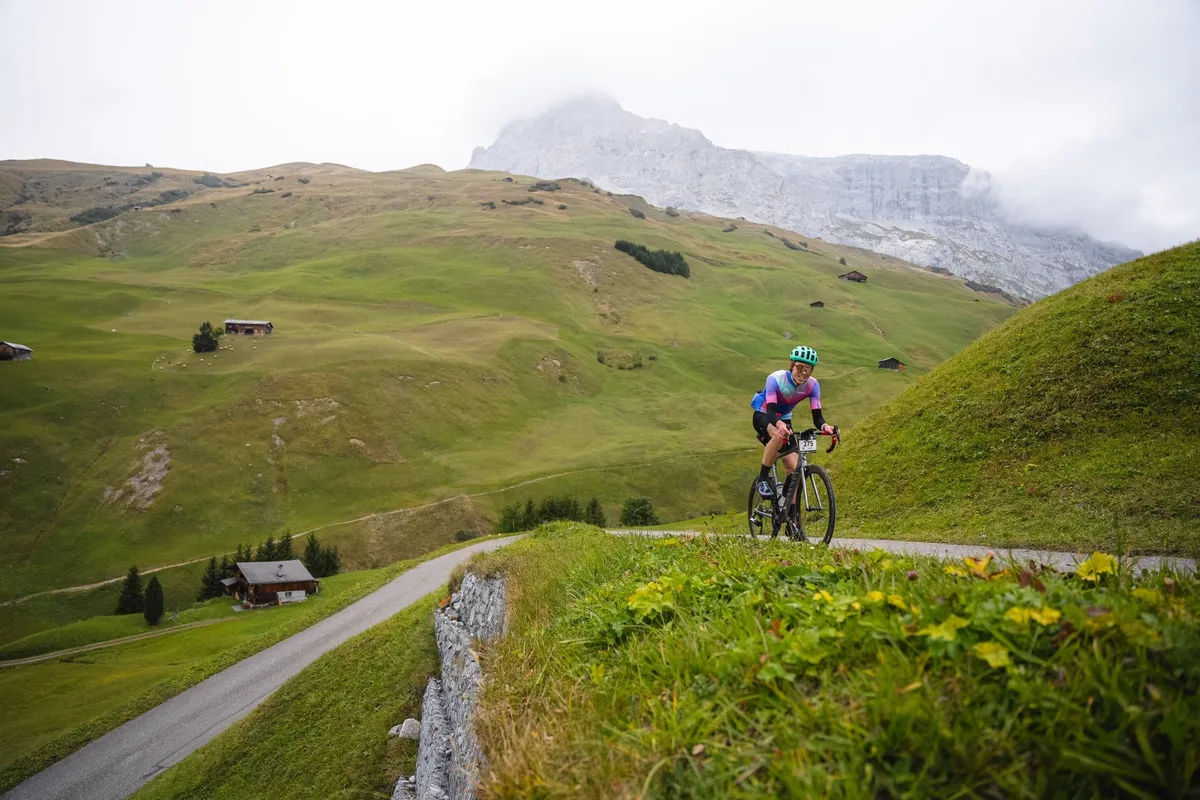
Relief must’ve been writ large on my face when race stewards directed me on to a flatter, wider road.
An out-and-back section to Kaserne Sankt Luzisteig – a mere hillock by Swiss standards – returned us to Schiers: the start of the 20km-ascent of Partnun.
The 1,837m-tall leviathan’s 5.5 per cent average incline disguises two savage ramps.
The first up to Pany hurt my mind as much as my legs as I grinded for a mile at over 11 per cent knowing that 12km of climbing remained.
I felt like I was averaging much more than 307W for those gruelling eight minutes.
Again, I credited the Canyon’s low weight of 6.8kg and bottom gear for enabling me to drag myself up and up.
Clouds began to encircle the mountain’s already sombre sides during the barren last five kilometres from Sankt Antönien.
Shouts of encouragement from the elite riders on their way down from the top lifted my morale – and I needed it ahead of a cruel final kilometre.
The road looped like a shoe lace to the finish line at the back of the valley, seemingly steepening with each twist.
My numbers to complete that last 100m of elevation – 296W at 155bpm for five minutes – look modest, but I knew I’d tipped out the tank.
My legs nearly gave way once I stepped off my bike before grabbing a cup of steaming soup and a slice of pizza.
Icy drizzle was threatening to fall heavier, so I wasted little time in descending to our bus transfer back to base.
Fluëla Deville
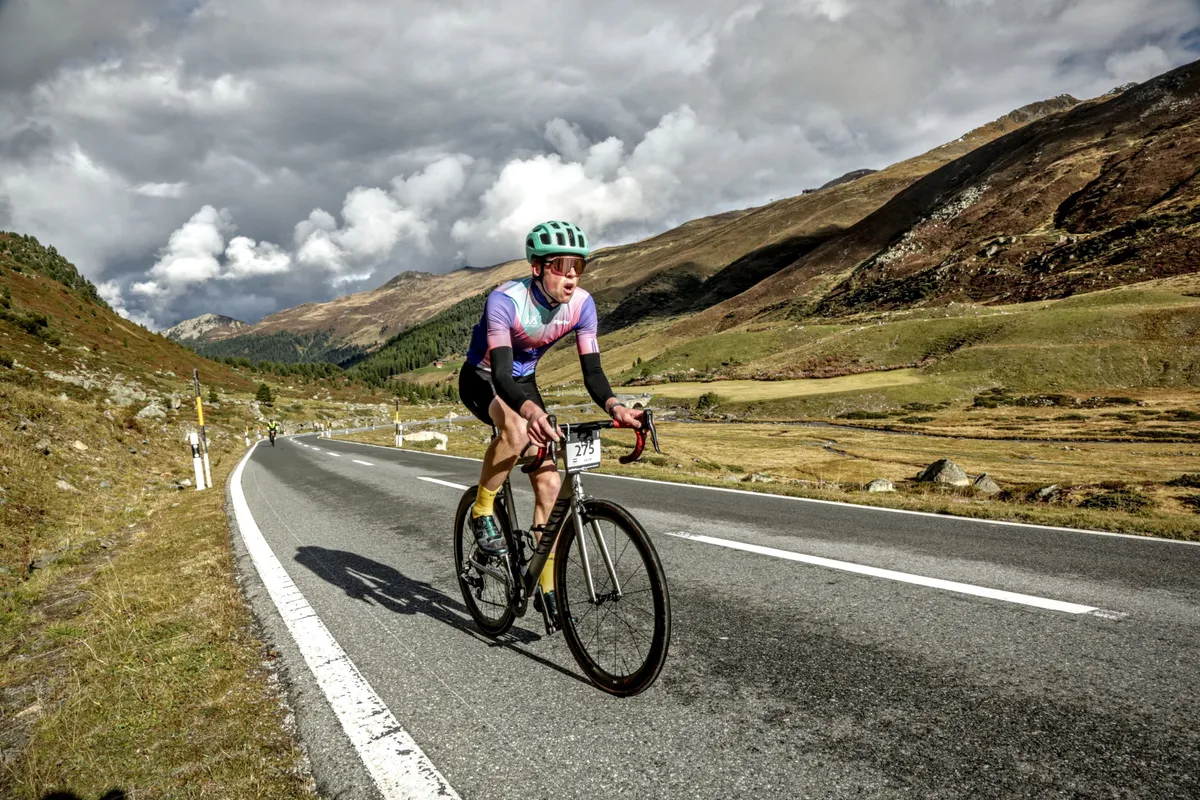
I rolled down the start ramp of the final stage time trial with leaden legs but under brightening skies.
The clouds were thinning above the rocky tips of the Fluëla Pass. The ascent from Davos, the opposite way to the first day, was 12.5km at 7 per cent average gradient.
Gaining more than 800m of altitude metres up to 2,300m, this was yet another Hors Catégorie climb.
Riding against the clock as well as the mountain heightened my competitive edge.
Based on critical power calculations, I thought I could hold about 300W and although I kept passing riders who’d set off ahead, this target proved overambitious.
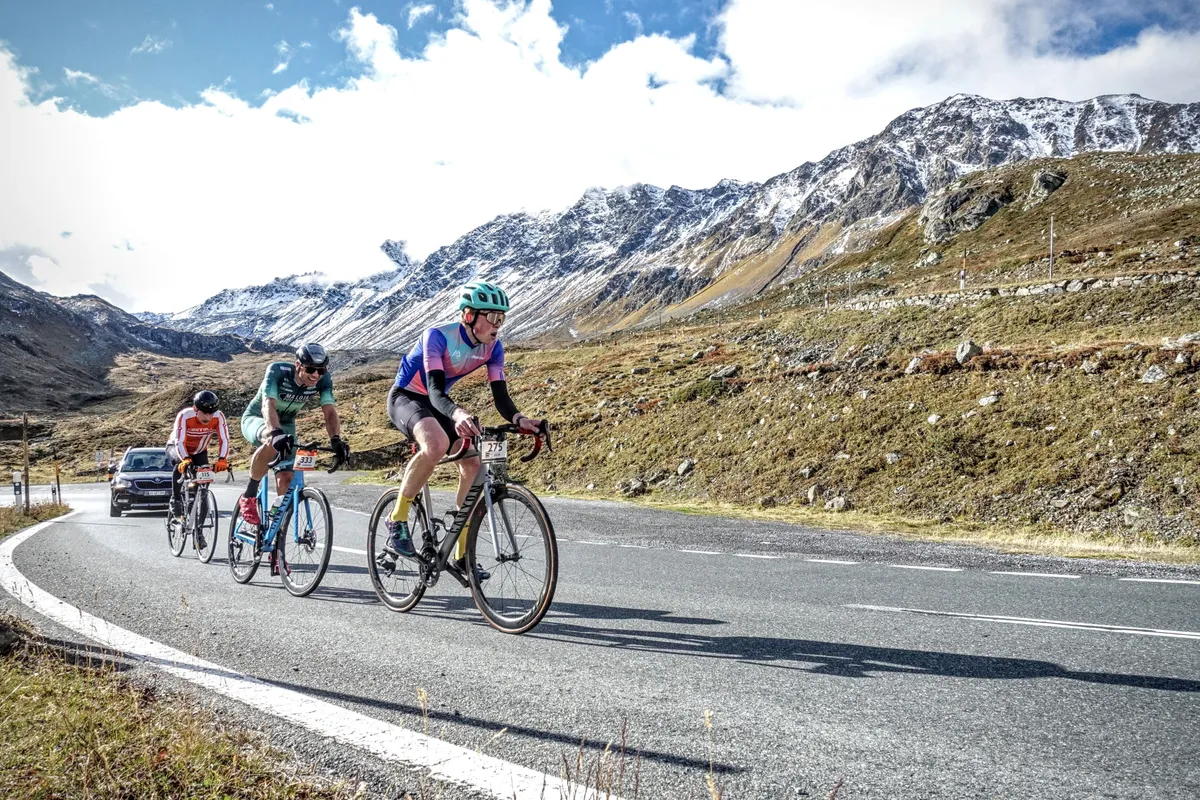
While my heart rate crept up to threshold, my Garmin Edge 1040 Solar showed my power dropping off as the previous two days and altitude took effect.
Once the pine forest had given way to the Fluëla’s now familiar scree-strewn upper slopes, a long six kilometres remained.
Regular pitches up to 10 per cent gradient put me firmly in the red ahead of the stinging switchbacks on the cusp of the summit.
My easier gearing allowed me to stay seated on my Fizik Antares R3 saddle to save energy more than for aerodynamic purposes.
The slope slackened enough on the Fluëla plateau to return to the big ring, which my failing legs struggled to push for the last 300m.
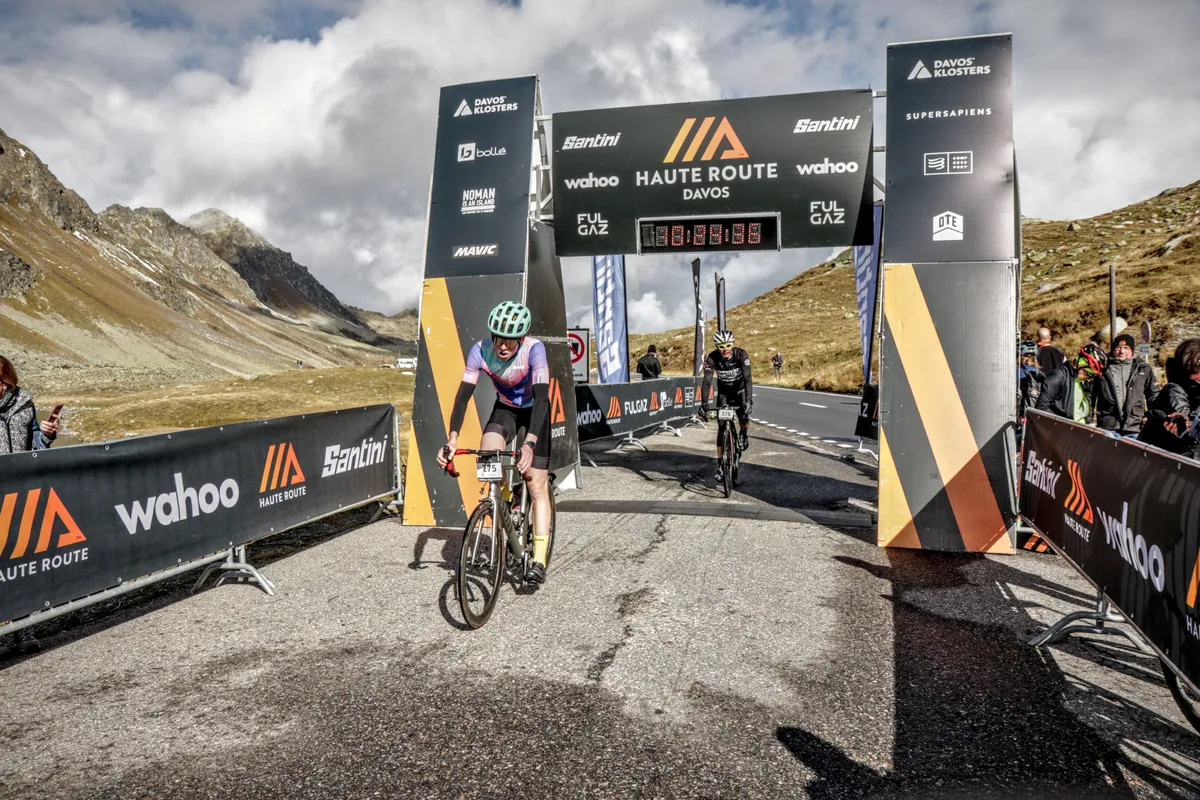
Finishing in between Lai Nair and Lai de la Scotta, glimmering in the high-altitude sunshine, I felt light-headed from the exhilaration and effort.
I chatted to other competitors over another well-earned glass of coke before speeding back down the same road to Davos.
Feeling more competent going downhill, my rim brakes required only the occasional dab. The length of this rapid descent helped me appreciate the feat of ascending it.
Although I recorded a slightly positive power split, my average output dipping to 281W, I hadn’t died wondering in a tough mountain time trial.
I finished 26th on the day, moving up to 36th out of 185 in the final standings.
I was chuffed to get through my first high-mountain outings and get a decent placing in a field filled at the front end with near-elite women and men.
For context, Team Amani riders Charles Kagimu and Salim Kipkemboi (6th overall) said they held about 330W or 5.3W/kg for the TT.
Moreover, it was doubly satisfying to ride my own bike that coped superbly on steep European tarmac (retrograde rim brakes and all) with a few choice modifications.
